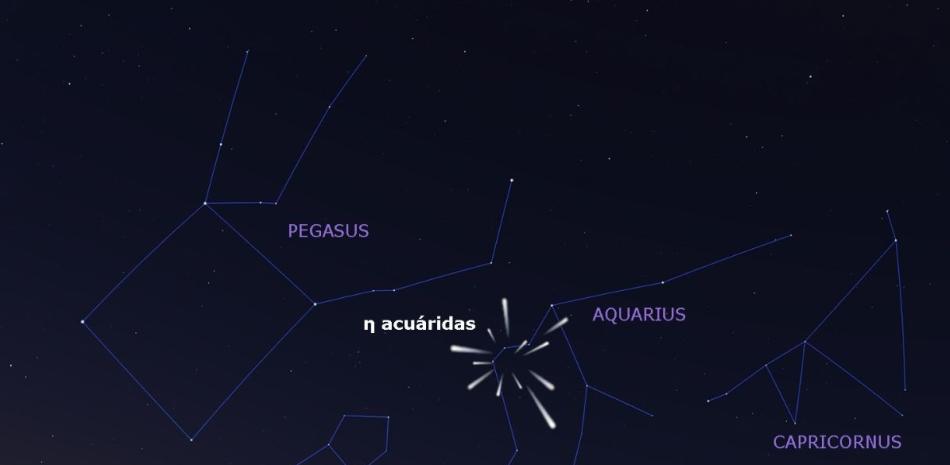Read this story in Spanish Here.
From our cosmic backyard in the solar system to distant galaxies near the dawn of time, NASA’s James Webb Space Telescope promises to reveal the universe like never before in its first year of scientific operations. To celebrate its successful first anniversary, NASA has released a Web image of a small star forming region in the Rho Obiucci cloud complex.
“In just one year, the James Webb Space Telescope has changed humanity’s view of the cosmos, peering into clouds of dust and seeing light from the far corners of the universe for the first time. “Every new image is a new discovery, allowing scientists around the world to ask and answer questions they never dreamed of,” said NASA Administrator Bill Nelson. Passion poured into the work, and their efforts will improve our understanding of the origin of the universe and our place in it.
A new web image released today features the formation of our closest star. Its proximity, 390 light-years away, allows for a very detailed close-up view, with no foreground stars in the intervening space.
“On its first anniversary, the James Webb Space Telescope has already fulfilled its promise to reveal the universe, gifting humanity with a vast treasure trove of images and science that will last for decades,” said Nicola Fox, associate administrator of the Science Mission Directorate. at NASA in Washington. “An engineering marvel built by the world’s leading scientists and engineers, the Web has given us a more complex understanding than ever before of the atmospheres of galaxies, stars and planets outside our solar system, laying the groundwork for NASA to lead the world on a new era of scientific discovery and the search for habitable worlds.” .”
The Web image shows a region of about 50 young stars, all of which are Sun-like or smaller. The dark regions are dense, where dense dust forms protostars. Large dipole jets of molecular hydrogen, depicted in red, dominate the image, appearing horizontally in the upper third and vertically across the right side. These jets are when a star first bursts through its envelope of cosmic dust, shooting a pair of opposing jets into space as a newborn reaches out its arms to the world for the first time. In contrast, the S1 star has carved out a luminous dust cave in the lower half of the image. It is the only star larger than the Sun in this image.
“Ro Obiucci’s image of Webb allows us to see with new clarity a very short period of time in the life cycle of stars. Our own Sun experienced such a phase a long time ago, and now we have the technology to see the beginning of another star’s history,” said Klaus Pontoppitan, who served as Webb project scientist at the Space Telescope Science Institute in Baltimore, Maryland, from before the telescope was launched and through its first year of operations.
Some of the stars in the image show telltale shadows that represent protoplanetary disks: possible future planetary systems being formed.
A whole year in the whole sky
Since his first in-depth image of US President Joe Biden, Vice President Kamala Harris and Nelson broadcast live from the White House, Webb has delivered on his promise to show us the universe like never before. However, the Web has revealed more than just distant galaxies in the early universe.
“Having a full year of data from all celestial targets, the breadth of scientific studies Webb is capable of now becomes clear,” said Eric Smith, associate director for research in the Astrophysics Division at HQ. NASA and Web Program Scientist. “Webb’s first year of science operations has not only taught us new things about our universe, but has revealed that the telescope’s capabilities exceed our expectations, which means future discoveries will be even more extraordinary.” The global astronomical community has been eagerly analyzing Webb’s initial public data over the past year to gain insight into how to act with it.
Beyond the impressive infrared images, what most excited scientists were the sharp Web spectra — the detailed information that can be gleaned from light using the spectroscopic instruments on this telescope. Webb spectra have confirmed distances to some previously unobserved distant galaxies, and discovered the oldest and most distant supermassive black holes. These spectra have identified the composition (or lack thereof) of planetary atmospheres in greater detail than ever before, and for the first time have refined the possible types of atmospheres present on rocky exoplanets. They revealed the chemical composition of stellar nurseries and protoplanetary disks, detecting water, carbon-containing organic molecules and other features. Webb’s observations have already led to hundreds of scientific papers with the lab answering long-standing questions and raising new ones.
The breadth of Webb’s scientific work is evident in his observations of the region of space most familiar to us: the Solar System. Faint rings of gas giants appear in the darkness, moons are present, while Webb shows distant galaxies in the background. By comparing detections of water and other molecules in our solar system with the disks of much younger planetary systems, Webb is helping to generate clues about our own origins: how Earth became a habitable place.
“With a year of science under our belt, we know how powerful this telescope is, and we’ve delivered a year’s worth of fascinating data and discoveries,” said Jane Rigby, principal scientist for the Webb program on the Goddard space flight. Center at NASA. Pat. “We’ve chosen an ambitious set of observations for year two, based on everything we’ve learned so far. Webb’s scientific work is just beginning, and there’s much more to come.”
The James Webb Space Telescope is the world’s premier space science laboratory. Webb solves the mysteries of our solar system, looks beyond the distant worlds around other stars, and explores the mysterious structures and origins of our universe and our place in it. Webb is an international project run by NASA with its partners: ESA (European Space Agency) and the Canadian Space Agency (CSA).





